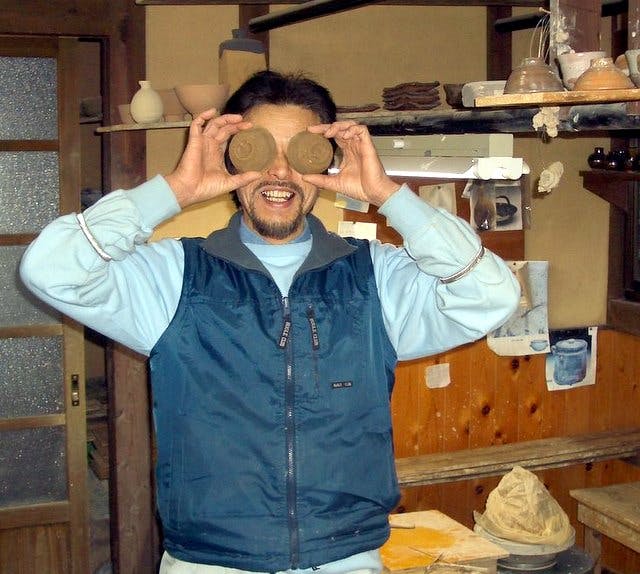
Remembering Karatsu Potter Jinenbo Nakagawa, 1953-2011
Explore the world of Japanese pottery and the life of renowned potter Jinenbo Nakagawa. Learn about the artisan craft, pottery making techniques, and the origins of Karatsu pottery. Discover the natural forms and tactile beauty of Jinenbo's work, and the impact of Japan's preeminent potter on the world of pottery.
The first time I traveled to Japan it wasn't for the food, but for the pottery. Back when I was a TV news producer in Washington in the early nineties, I caught a number of phenomenal Japanese pottery shows at the Smithsonian's Sackler-Freer Galleries that simply blew me away. I loved the glazes, the natural forms, the tactile-ness of the vessels being displayed. Those clay pots spoke to me somehow, and I resolved to learn more about this artisan-slash-art form. A meandering path led to books, more shows, and ultimately, pottery villages and galleries in Japan. At one Tokyo gallery, I met a Karatsu potter named Kajiwara-san. Through a bilingual clerk I asked the potter if I could visit his workshop in Karatsu. I think he was a little shocked at the request, but graciously agreed, and we made a plan to meet at the Karatsu train station, six hours southwest of Tokyo. When I arrived at the tiny depot, he drove me out of town into the countryside.
We pulled up to workshop across the road from a series of neat, rectangular rice fields. The place was humming. Young men with towels tied on their heads like bandanas hauled long wooden planks lined with raw clay pots. Others brushed pots and plates with thick black glaze. A long, earthen wood-fired kiln stood beside the compound's one-story buildings, waiting. A rugged-looking man with a goatee stepped out the workshop and introduced himself: Jinenbo Nakagawa.
I stayed a number of days that first time in Karatsu, located in Saga Prefecture on the southern island of Kyushu. Jinenbo arranged for me to bunk at a local truck stop inn (where the keeper, an ancient woman who also raised beef cattle, challenged me to nightly beer drinking contests after feeding mountains of grilled meat), and through one of his apprentices, Katsu Kikuchi, now a great potter in his own right, who spoke a little English and a lot of Spanish (I speak some Spanish) we got to talking. Jinenbo told me how he dug clay from the nearby hillsides, how he burned rice stalks to make his rice-ash-glazes, and how he used hand-made tools to apply those glazes in rough, sweeping, breathtaking, strokes. He explained the origins of Karatsu pottery in Korea, and his devotion to "ko-karatsu"-- old Karatsu - pottery. He showed me his work, tea vessels and everyday functional ware, rugged and natural like the artist himself. ("Jinenbo" means "nature boy" in Japanese.) His work took my breath away.
Over the years I strived to visit Jinenbo every time I traveled to Japan. I watched him at work, wrote about him for Gourmet, shared laughs (the guy had a sense of humor), spent time with him and his family, and brought his pottery home with me to New York. I use Jinenbo's wares at home almost every day and have taken most of my food shots on this blog with his vessels; to me, his clay forms are living things imbued with his indomitable spirit. Over the years I got to know Jinenbo Nakagawa. And over the years I have had the distinct honor to call Jinenbo my friend.
It is with great sadness that I must report the passing of Jinenbo Nakagawa, a life force and one of Japan's preeminent potters.
